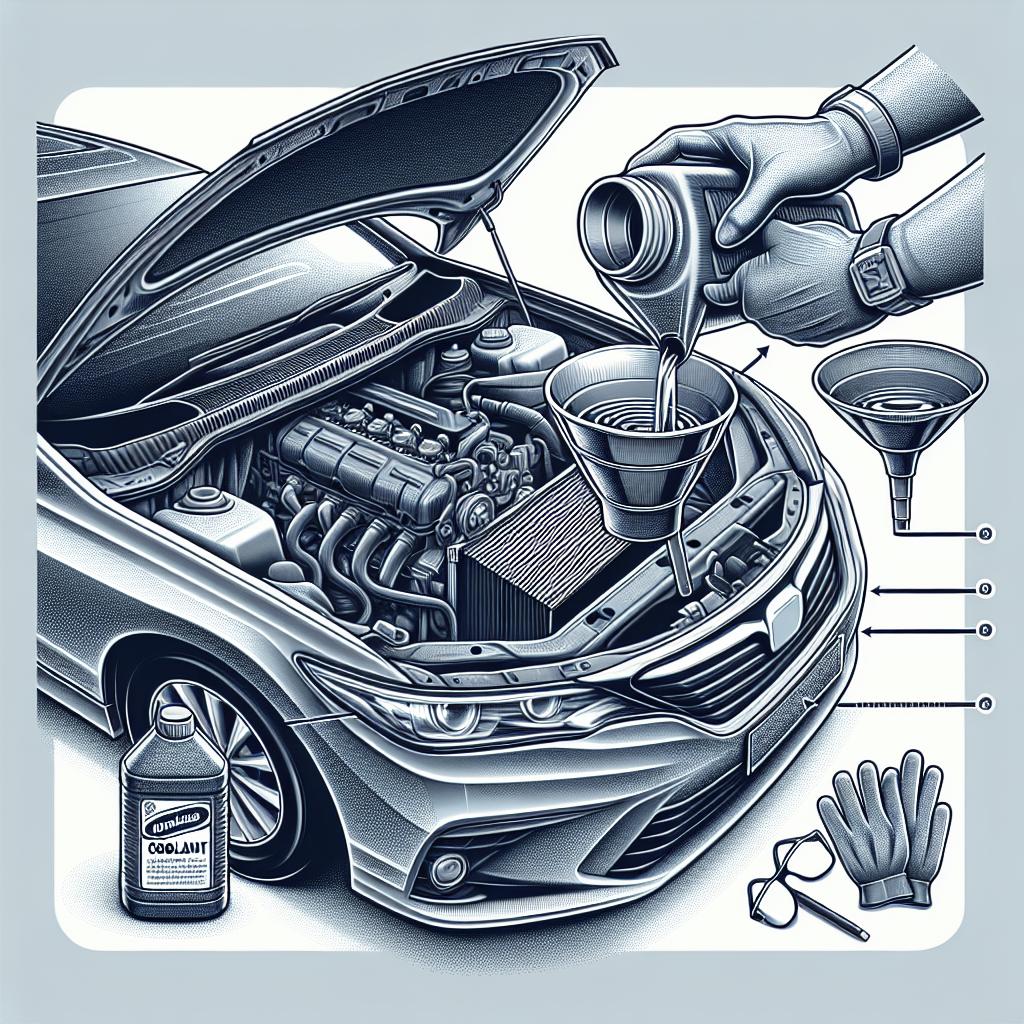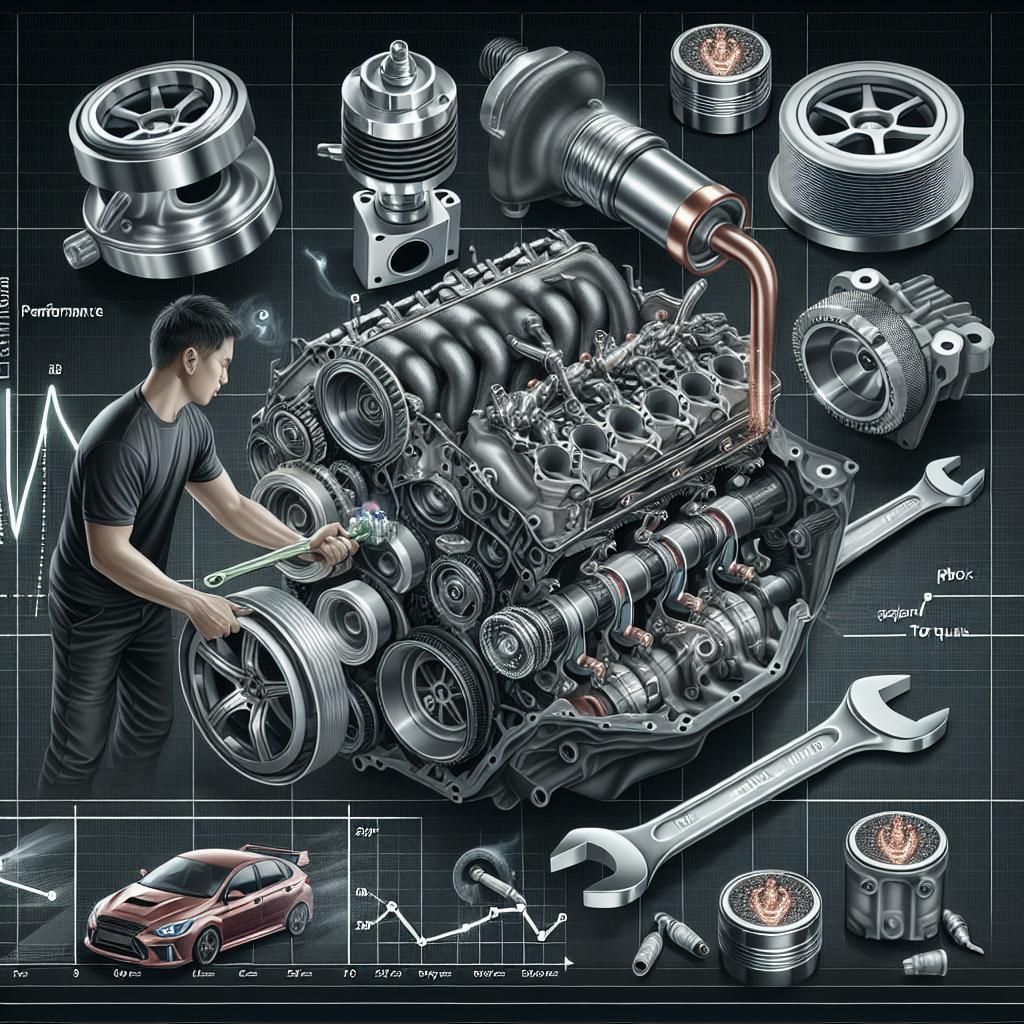“`html
Common Engine Tuning Methods
Engine tuning is a vital aspect of enhancing a vehicle’s performance, efficiency, and aesthetic appeal. Whether it’s for racing, improved handling, or just the sheer joy of customization, tuning encompasses various methodologies and technologies. From increasing engine power to suspension and body modifications, tuning offers a plethora of options. This article dives deep into popular car tuning methods, the rationale behind them, and examines the impact of tuning on vehicle valuation. Read on to explore performance, suspension, drivetrain, and body tuning techniques, discover useful tips for car enthusiasts, and understand the market dynamics influencing these practices.
Contents
Looks can be deceiving!
Car tuning isn’t just about the flashy badges and roaring engines; it’s a multifaceted world where aesthetics harmonize with performance enhancements. A seemingly innocuous car can house a beast of an engine beneath its hood, thanks to strategic tuning. The art of car tuning lies in transforming an everyday vehicle into something unique, tailored to meet the preferences and needs of the driver. While some modifications are overt, others are refined, improving a vehicle’s handling, comfort, and power delivery without drawing attention.
Often, enthusiasts focus on tuning aspects that enrich their driving experience, making a personal statement or setting them apart in the automotive community. Nonetheless, effective car tuning extends beyond looks, offering practicality and noticeable differences in how a car performs on the road.
What is car tuning and what does it do to a car?
Car tuning refers to modifying a vehicle to optimize its performance, improve fuel efficiency, or alter its appearance. It involves adjustments and replacements that enhance the vehicle’s capability to handle various driving conditions, or simply to suit the owner’s aesthetic preferences. Key areas include the engine, suspension, drivetrain, and bodywork.
Tuning can make a car more powerful, increase its fuel economy, or improve its handling and comfort. It’s a balance between performance and reliability, often involving the customization or enhancement of parts to achieve enhanced speed, efficiency, or aesthetics. Successful car tuning elevates the vehicle beyond factory settings, providing a personalized touch without compromising safety or longevity.
Popular types of car tuning
Performance car tuning
Performance tuning revolves around enhancing a vehicle’s power output, torque, and overall dynamism. This process often involves modifying or replacing the engine components and calibrating the car’s electronics to increase its speed and acceleration capabilities. Enthusiasts might opt for turbocharging or supercharging to boost engine performance further.
Other components such as the exhaust, intake systems, and cooling systems might also be adjusted or upgraded to ensure the enhanced performance is sustainable and does not compromise the vehicle’s integrity over time. Performance tuning is for those who crave a robust driving experience, seeking to maximize the potential of their vehicle’s engine.
Suspension tuning
Suspension tuning targets the vehicle’s springs, shocks, struts, and sway bars to improve its handling and ride quality. Whether enhancing cornering capabilities, comfort over rough terrain, or overall driving dynamics, suspension setup plays a critical role.
A successfully tuned suspension system alters a vehicle’s stance, enhances stability, and sharpens the steering response. Modifications in this area can range from simply lowering the vehicle for an aggressive stance to implementing advanced systems like active suspension for optimum performance under varying conditions.
Air suspension and air ride systems
Air suspension systems replace traditional springs with airbags, allowing for adjustable ride height and comfort settings. Ideal for those who seek versatility, these systems enable the driver to raise or lower the vehicle, adjusting for load or preferences.
Popular among custom car builders and off-road enthusiasts, air suspension highlights how technology can elevate a vehicle’s adaptability, making it as functional in daily commutes as it is at car shows or tough terrains.
Suspension bearings
Upgrading suspension bearings often accompanies other suspension tuning practices. High-performance bearings reduce friction, enhancing wheel travel fluidity and contributing to a smoother ride.
These bearings are crucial for maintaining alignment integrity and ensuring that the tires remain perfectly connected to the road surface, regardless of the driving conditions. Their proper maintenance is necessary for maximizing suspension efficiency and vehicle safety.
Sports suspension
Sports suspension setups are designed to provide an exhilarating driving experience, primarily focusing on improved handling, lower ride height, and increased traction. These modifications often feature stiffer spring rates and more responsive shock absorbers, ideal for spirited driving and track days.
However, while sports suspensions can dramatically enhance performance, they may reduce ride comfort, reflecting the typical trade-off between outright performance and daily usability. Careful consideration is needed to match suspension upgrades with the driving profile and vehicle usage.
Drivetrain car tuning
Drivetrain tuning encompasses modifications to components responsible for power transmission, such as the clutch, differential, and gearbox. These enhancements improve torque distribution and ensure more efficient power delivery from the engine to the wheels.
Upgrades in this area can significantly affect a car’s acceleration and top-end performance, paramount for cars aimed at drag racing or downhill time trials. Ensuring durability of these upgrades requires careful selection of parts and proper maintenance.
Engine tuning
Engine tuning involves a series of adjustments and enhancements aimed at improving a vehicle’s performance or efficiency. Subcategories include expanding cylinder capacity, increasing power output, and ECU remapping.
Such tuning can be complex, requiring a blend of mechanical expertise and diagnostic tools to align all modifications properly. While this can enhance vehicle performance significantly, it also poses risks if not executed with precision, so collaboration with experienced professionals is recommended.
Expanding cylinder capacity
Cylinder capacity expansion, commonly known as “boring and stroking,” involves increasing an engine’s displacement to enhance power output. This method involves replacing pistons and modifying the cylinder block.
Larger engine displacement translates directly into increased horsepower and torque, thus offering improvements in acceleration and top speed. This method is most effective for those seeking a significant boost in engine performance but requires careful consideration of engine integrity and vehicle capability.
Increasing engine power
Increasing engine power can be achieved through various methods such as forced induction, high-performance camshafts, and high-flow intake and exhaust systems. Turbocharging and supercharging are popular choices for boosting power without compromising on engine size.
By enhancing the engine’s air-fuel mixture and optimizing combustion efficiency, power gains can be realized. However, such enhancements should be balanced with proper cooling and lubrication systems to prevent engine wear and maintain reliability.
ECU remapping
ECU remapping is a modern tuning technique that involves altering the engine’s Electronic Control Unit (ECU) settings to optimize performance or fuel efficiency. By fine-tuning parameters such as ignition timing and fuel injection, significant gains in power and efficiency can be achieved.
This process requires sophisticated software and expertise in vehicle electronics, often resulting in improved throttle response and drivability. ECU modifications should be conducted with precision to maintain safety standards and avoid voiding vehicle warranties.
Body tuning
Body tuning encompasses modifications that alter the car’s aesthetics and aerodynamics. This includes the addition of spoilers, body kits, diffusers, and other aerodynamic enhancers that reduce drag and increase stability at high speeds.
Beyond aesthetics, body tuning can dramatically influence handling and performance, making it crucial for race-oriented vehicles. Improved aerodynamics can also improve fuel efficiency, offering a blend of looks and functional benefits.
Rims and tires
Upgrading rims and tires goes beyond the visual appeal, impacting performance significantly. Wider tires provide better grip, improving handling and traction under various driving conditions. Lighter rims reduce unsprung weight, enhancing acceleration and braking efficiency.
Selecting the right tire compound and tread pattern is essential, influencing aspects such as comfort, noise, wet handling, and longevity. Proper research and expert guidance can optimize this tuning aspect for both style and performance.
Coilovers
Coilovers offer a customizable suspension solution that combines springs and shock absorbers. Providing adjustable ride height and damping settings, they allow for precise control over a car’s handling characteristics.
Popular among car enthusiasts, coilovers enable drivers to tune their suspension system according to track or road conditions, offering a versatile solution for improved handling without sacrificing comfort.
Strut mounts and struts
Strut mounts serve as the connection point between the car’s suspension system and its body, playing a critical role in noise reduction and vibration damping. Upgrading struts and mounts can enhance ride quality, steering precision, and suspension longevity.
The use of performance struts improves vehicle responsiveness while maintaining comfort, offering benefits in both urban commuting and spirited driving scenarios.
Lowrider tuning
Lowrider tuning involves the modification of cars to achieve a reduced ride height using hydraulic or air suspension systems. These modifications allow the car to sit lower to the ground, offering a distinctive style without altering factory springs.
Beyond aesthetics, lowrider tunings can be functional, giving improved aerodynamic efficiency and sometimes fuel economy. They have gained popularity in automotive culture, representing a blend of artistic expression and mechanical innovation.
Light tuning
Light tuning includes modifications to a vehicle’s lighting systems, enhancing visibility or adding stylistic effects. This can involve upgrading to HID or LED systems, adding strip lighting, or changing lighting housings.
Such tuning not only refreshes a vehicle’s look but also improves nighttime visibility and safety, making it as practical as it is aesthetic.
Lighting tone, shape, and brightness
Adjusting lighting tone, shape, and brightness provides drivers with options to tailor the mood and aura of their vehicle, varying from aggressive to professional. LED strips, halo rings, and color-changing capabilities offer endless possibilities for creativity.
Strategic lighting changes can also enhance visibility under different conditions, adding practical value to the range of stylistic enhancements available in light tuning.
Set a tuning goal
When embarking on tuning projects, having clear objectives is crucial. Whether improving performance, styling, or functionality, defining goals helps streamline processes and ensures desired outcomes. This forward-planning minimizes complications that can arise from scattered or poorly planned modifications.
Experienced tuners assess the existing vehicle set-up, potential upgrades, and forecasted benefits to recommend a tuning path matching individual goals and budgets. A well-thought-out tuning strategy delivers optimal results, balancing enthusiasm and practicality.
Not only race cars need tuning
How to improve driving experience with car tuning
Tuning can transform any vehicle into a more enjoyable and responsive version of itself. Even slight alterations in suspension or engine mapping can significantly heighten driving pleasure, sharpening responsiveness and comfort for enhanced everyday usability.
Car enthusiasts may seek thrills on tracks, but for daily drivers, tuning can offer improved fuel economy while reducing wear on components, reflecting the adaptability of tuning to real-world needs.
How to make your car stand out in a crowd
From bold paint jobs, eye-catching decals, to striking body kits, the tuning world has endless opportunities for personalizing vehicles. Creativity and uniqueness resonate in body tuning, allowing every owner to tell their story through diverse automotive styling options.
An intelligently tuned car can seamlessly blend style with capability, capturing attention while maintaining performance standards that impress both onlookers and other car enthusiasts.
Know your tuner
Why to choose certified tuning companies?
Partnering with certified tuning companies guarantees expertise and safety. These professionals are familiar with the complexities of car mechanisms and have access to high-quality parts and tools, ensuring modifications meet industry standards.
Certified tuners understand the intricate balance between performance improvements and vehicle longevity, protecting the owner’s investment while delivering enhanced driving experiences. They also often provide warranties on their work, offering peace of mind.
Most famous car tuning companies
Renowned companies like Brabus, Hennessey, and Abarth have carved their niches in the tuning world, each with a unique focus ranging from increased horsepower to luxury interior enhancements. These companies are known for precision, innovation, and high-performance outputs.
Collaborating with such pioneers exposes enthusiasts to cutting-edge technology and craftsmanship, pushing the boundaries of what’s achievable in the world of automotive tuning.
What’s wrong with DIY car tuning?
DIY car tuning is seen as an adventurous path for some enthusiasts, but it carries significant risks. Without professional tools and expertise, modifications can result in inadequate performance, safety issues, and potential damage to vehicle components.
Though cost-saving is an attractive incentive, DIY tuning could end up being costly in the long run, where mistakes demand expensive fixes. Engaging experts ensures precision, reducing risks and maximizing tuning benefits effectively.
Does tuning increase or decrease the vehicle’s value?
Can auto tuning make a car lose its value?
While tuning can enhance performance and aesthetics, non-certifiable or improper modifications can potentially decrease a vehicle’s value. Prospective buyers may view such cars as unreliable or worry about future maintenance costs.
Sticking to reputable tuning practices and using quality parts can mitigate depreciation concerns, creating a positive impact on value with enhanced features that align with market demand.
Check a tuned car’s condition before buying
Inspecting a tuned vehicle thoroughly before purchase is crucial, ensuring upgrades are functional and match industry standards. Any signs of sloppy work or excessive wear could hint at deeper issues, calling for serious consideration or negotiations.
Pre-purchase inspections by trained professionals provide insights on the car’s condition and potential risks, empowering buyers with information essential to making prudent acquisition decisions.
Check your VIN
The Vehicle Identification Number (VIN) offers insights into the vehicle’s history, revealing past accidents, tune-ups, and replacement parts. Verifying a car’s VIN against trusted databases can confirm authenticity and uncover hidden damages that might affect valuation.
Such transparency is vital, shielding prospective buyers from surprises while highlighting the importance of due diligence in purchasing and maintaining tuned vehicles.
Is it expensive to tune your car?
Tuning costs can vary widely depending on the project’s scope and complexity. While basic modifications might entail affordable adjustments, comprehensive engine overhauls or advanced electronic calibrations can demand sizeable investments.
Properly planned budgets and strategic prioritization of modifications can help manage costs effectively, tailoring the tuning process to meet both financial constraints and desired performance enhancements.
Frequently Asked Questions
What is the best car for tuning?
Cars with robust aftermarket support and easily accessible parts are often considered the best candidates for tuning. Performance legends like the Nissan GT-R, Subaru WRX, and Ford Mustang become popular choices due to their versatility and responsive tunability.
The best tuning candidate will align with the owner’s goals, balancing between potential for performance enhancements and feasible insurance and maintenance costs.
Does tuning a car add horsepower?
Yes, tuning a car can significantly increase its horsepower through strategic modifications such as remapping, forced induction additions, and optimizations in the air intake and exhaust systems.
It is important to ensure any horsepower increase is matched with adequate cooling and drivetrain support to prevent mechanical stress and ensure longer engine life.
Can I tune my own car?
While the adventurous can attempt tuning themselves, it is generally advisable to work with professionals. Tuning requires a delicate balance of engineering, physics, and artistry that inexperienced enthusiasts might struggle with, potentially leading to costly mistakes.
For those intent on DIY, thorough research, sufficient mechanical skills, and the right tools are critical to achieving successful results without compromising vehicle integrity or safety.
Lessons learned
| Aspect of Tuning | Overview |
|---|---|
| Engine Tuning | Involves enhancing engine performance through methods like expanding cylinder capacity, increasing power, and ECU remapping. |
| Suspension Tuning | Focuses on improving ride quality and handling dynamics through various upgrades, including air ride systems and sports suspension. |
| Body Tuning | Encompasses aesthetic and aerodynamic modifications, impacting looks and performance. Includes light tuning and body kits. |
| Drivetrain Tuning | Enhancements to transmission components, clutch, and differential for optimal power delivery and improved performance. |
| Value Impact | Tuning can either increase or decrease vehicle value, depending on the quality of modifications and buyer perceptions. |
| Cost Considerations | Costs vary per scope, but planning and prioritization are essential for budget-friendly and effective tuning projects. |
| Professional Tuning | Engaging certified experts offers precision, safety, and warranty support, vital for successful tuning projects. |
| DIY Risks | DIY tuning poses risks of inadequate modifications and mechanical strain, best reserved for experienced enthusiasts. |
“`


